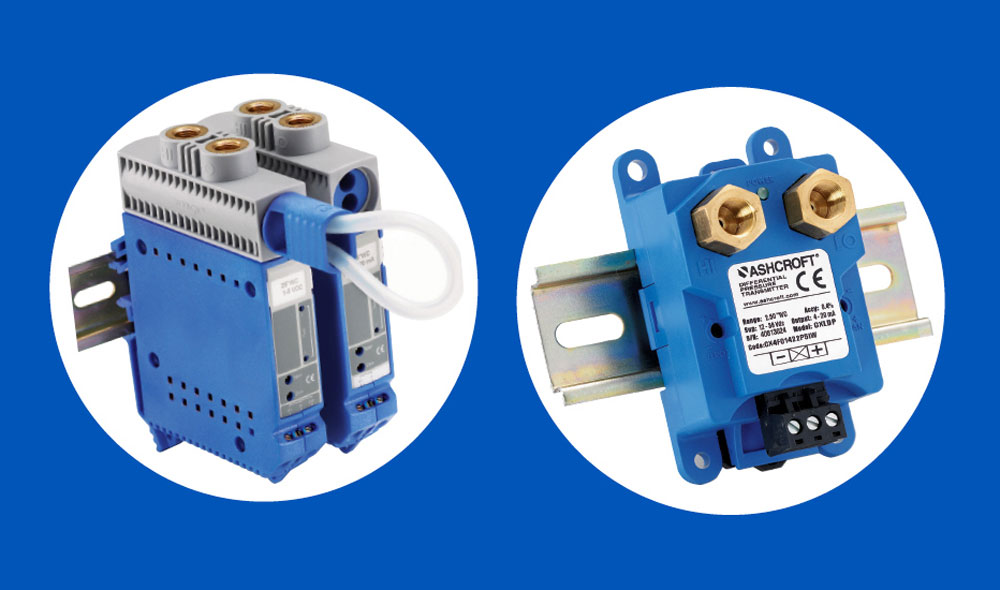
Heating, ventilation and air conditioning (HVAC) systems are a critical part of a building’s operation. They ensure that an environment is comfortable for occupants by controlling humidity, temperature and air quality. However, the cost of running these systems can be a concern for building owners as inefficiencies in an HVAC system could increase building management costs, especially if the pressure sensors used to monitor and control the system are not accurate.
One way to ensure an efficient HVAC system is to verify the accuracy of the pressure sensors and transducers used in the system. Pressure sensors in building automation systems control the flow of air through ducts, hot water through heating coils, and cold water through chillers and dehumidification coils. All of these processes use energy and cost money but the more efficiently they run, the less the system costs to operate. Building owners do not want to pay for heating or cooling air that is not required by the occupant, so it is vital to optimize HVAC performance.
Why Is Accuracy Important?
Accuracy refers to how far the measured value of a specific pressure is from the accepted allowable error of that measurement. The accuracy of a pressure instrument is determined by the maximum positive and negative difference between the measured value and its ideal value. This allowable error is calculated as a percentage of the measured output of the sensor versus the ideal output, and it is expressed as a percentage of the full span of the sensor.
Pressure instruments with greater accuracy provide a more accurate indication of the pressure conditions, which allows HVAC controllers to better manage the heating and cooling needs of the building. However, the accuracy does not fully define an instrument’s ability to measure pressure, which is why manufacturers incorporate accuracy as part of a larger performance statement.
Not All Accuracy Statements Are Equal
Unfortunately, the HVAC industry has not established a set of standards for calculating the performance of pressure instruments. As a result, accuracy statements vary from one pressure instrument manufacturer to the next, requiring a closer look at how much of an instrument’s overall performance is really in that accuracy statement. Many manufacturers use either a root of the sum squared (RSS) or best fit straight line (BFSL) methodology of expressing accuracy.
When reviewing RSS or BFSL accuracy statements, users often find that they do not tell the whole story regarding the accuracy of the instrument. What may not be included in that accuracy statement are additional factors that will make that error greater. These statements are typically calculated using statistically derived accuracy specifications that appear more precise than the actual performance of the instrument once it is installed.
These types of accuracy statements may not include the offsets of the instrument at zero (the lower end of the measurement) or span (the expected output at the full range of the instrument). This means there may be additional errors at both the zero and span points of the instrument that must be considered by the installer, which could require on-site resetting/calibration by the installation team to ensure it operates within the desired accuracy.
As a result, the HVAC technician installing the instrument may need to utilize a secondary calibration standard to adjust both the zero and span set point, which immediately increases startup costs, eliminates out-of-box interchangeability, and compounds the cumulative overall system performance. These tweaks to verify product can add costs to the building owner, who has already paid the sensor suppliers to provide the calibrated product.
What Is in an Accuracy Statement?
In determining the accuracy of pressure instruments, users need to consider all factors relevant to the application that could lead to measurement errors. Some of the most common sources of error include:
- Nonlinearity error: Deviation between the instrument’s linear trend line and its ideal output line.
- Hysteresis error: Deviation between the instrument’s output in response to increasing versus decreasing pressure. It is commonly expressed as a percentage of full span or output span.
- Nonrepeatability error: This is calculated by testing an instrument three times in a row over its range under the same conditions and determining the maximum difference between the measurement results. It is generally expressed as a percentage of full span.
- Zero offset error and span setting error: The errors in which the instrument does not read zero when the pressure is zero. Span setting errors are the differences between the optimal full-scale output and the actual full-scale value from the transducer.
- Zero and span temperature coefficient error: The error band of the maximum deviation in zero and offset output as the temperature is varied from its factory calibrated temperature setting to any other temperature within the specified range.
Methods of Determining Accuracy
There are many methods of calculating accuracy statements for pressure instruments but not all of them result in accurate accuracy statements. An accuracy statement should include a summation of the error sources but this is uncommon in the HVAC industry. At a minimum, accuracy statements should include nonlinearity, hysteresis, nonrepeatability, zero offset and span setting, which contribute to how the instrument performs.
While not all summation methods consider all of these errors, using the terminal point method does by including both the zero and span offsets as part of the accuracy statement. This methodology determines the actual error for a pressure instrument, allowing manufacturers to better indicate the accuracy of their products and contractors to better manage the heating, cooling and subsequent low airflow in their HVAC systems.
Why is accuracy important? Energy efficiency equals cost savings.

